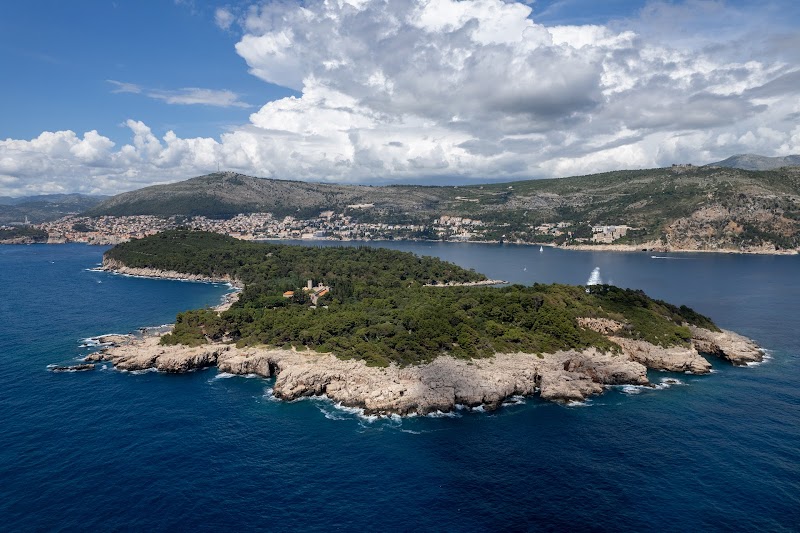
Experience an unforgettable mix of history and culture at the Dubrovnik Summer Festival, where centuries-old streets turn into stages for music, theatre, and dance every summer. This guide helps you navigate the festival’s highlights and logistics to make the most of your visit to this iconic Adriatic city.
Plan for Evening Performances
Most events take place after sunset, so arrange your sightseeing and meals accordingly to stay fresh and focused for shows.
Book Tickets Early
Popular performances sell out fast, so secure your seats in advance, especially for opera and major theatre productions.
Wear Sturdy Footwear
Venues are often historic with uneven stone floors and stairs; comfortable shoes will keep you stable and comfortable throughout the evening.
Stay Hydrated and Layer Up
Daytime heat can be strong, but coastal nights cool quickly; carry water and dress in layers to handle shifts in temperature.
Dubrovnik Summer Festival: A Practical Guide to Croatia’s Cultural Celebration
Each July and August, Dubrovnik transforms as its ancient stone streets pulse with music, theatre, and dance during the Dubrovnik Summer Festival. This event turns the city itself into a stage, with performances set in locations that trace history—citadels, squares, and cloisters—all inviting you to experience culture under the open sky. The festival spans a full two months, offering more than 140 events that draw audiences into the energy of artistic expression deeply tied to this Adriatic coastal city.
Practical planning is key here: shows start mostly in the evenings, making daytime ideal for exploring the UNESCO World Heritage walls and choosing your best vantage points. The festival’s heart beats strongest around the Old Town, so lodging nearby reduces transit and maximizes your time soaking in art and atmosphere.
Performance genres are varied, from classical operas echoing through Fort Lovrijenac to modern dance on the steps of historic churches. The sound of strings, voices, and percussion mingles with the salty breeze, each note daring you to pay attention. The stone beneath your feet has seen centuries of visitors, now quietly holding space for audience and performers alike.
For those serious about timing, weekday evenings offer smaller crowds and better seating chances. Buy tickets in advance—especially for headline performances—to avoid disappointment. Casual explorers can enjoy free outdoor concerts and street performances peppering the schedule.
Dubrovnik’s summer heat is no secret; carry water and dress in light layers for comfort. Headwear and sunscreen guard against sunburn during the day, while a light jacket may be necessary as coastal nights cool rapidly.
Accessibility varies—historic venues tend to have uneven stone surfaces and stairs, so wear sturdy, comfortable shoes. For the adventurer who loves art and history in equal measure, the Dubrovnik Summer Festival offers a cultural hike that’s rich in sensory detail and approachable at every level, rooted in the place’s fierce and tangible character.
Whether you come for one night or many, this festival invites you to move through time and art, letting the Adriatic’s persistent winds lend urgency to each moment. There’s no conquering here, only joining—standing quietly among stones that watch, listen, and wait to share their stories.
Nearby Trips
All Adventures
Boat Charters
Water Activities
Adventures near Dubrovnik, Croatia
Discover the unique and memorable adventures that make Dubrovnik, Croatia special.
Frequently Asked Questions
Where are the main venues of the Dubrovnik Summer Festival?
Key venues include Fort Lovrijenac, Revelin Fortress, the Rector’s Palace, and various squares in the Old Town. These historic locations offer not just performances but stunning views and unique atmospheres that change with each event.
Can I attend free events during the festival?
Yes, there are several free open-air concerts and street performances throughout the city, especially in public squares, making culture accessible to every visitor.
What are the best ways to get tickets?
Tickets can be purchased online through the official festival website or at local box offices. To avoid sold-out shows, especially on weekends, book early during the summer.
Is the festival suitable for families?
Absolutely. While some shows cater to adults, there are family-friendly performances and outdoor events, but plan ahead to choose age-appropriate programming.
Are venues wheelchair accessible?
Due to Dubrovnik’s historic architecture, many venues have limited accessibility. Contact organizers in advance to inquire about accommodations and seating options.
What local wildlife might I encounter around festival venues?
While the Old Town is urban, keep an eye out for seagulls and occasional lizards basking on stone walls, adding an authentic coastal ambiance to your experience.
Recommended Gear
Comfortable Walking Shoes
Sturdy soles help navigate historic cobblestones and uneven surfaces, reducing fatigue and providing stability during shows.
Light Layered Clothing
Prepare for warm days and cooler evenings with breathable fabrics and optional jackets.
Reusable Water Bottle
Keeping hydrated is crucial during hot daytime excursions and festival wait times.
Portable Seat Cushion
Some venues have stone or metal seating; a cushion improves comfort for longer performances.
Local Insights
Hidden Gems
- "Narrow stairways leading to smaller amphitheaters often missed by tourists"
- "Quiet terraces overlooking the Adriatic that host intimate recitals"
Wildlife
- "Mediterranean seagulls swooping through open courtyards"
- "Lizards basking on sun-warmed stone walls"
History
"The festival began in 1950, rooted in a desire to celebrate Dubrovnik’s rich artistic and cultural heritage. Many performances occur in sites that stood silent through centuries of history, connecting the past and present uniquely."
